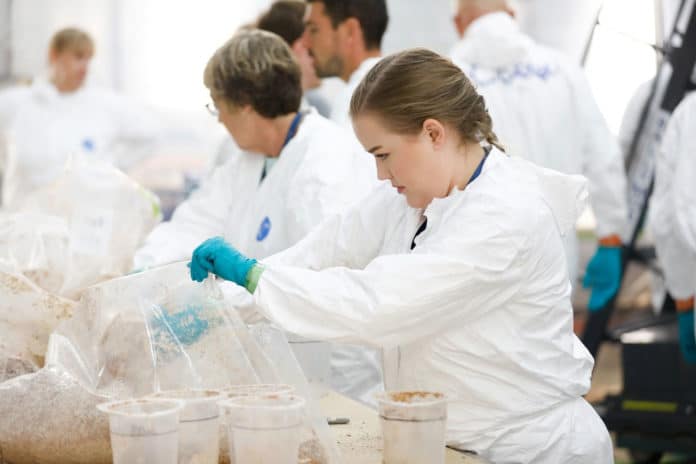NASA continues to work on plans for bringing Mars samples collected by the Perseverance rover back to Earth next decade. NASA’s Jet Propulsion Laboratory awarded Lockheed Martin, an American aerospace and defense company, a contract to design and build the “aeroshell” for the Mars Sample Retrieval Lander.
The aeroshell capsule will protect the spacecraft through its landing sequence of Mars when it hits the atmosphere with extreme speed and force that generate thousands of degrees of heat.
The Mars Sample Retrieval lander is the next big step in NASA’s visionary Mars Sample Return campaign. The lander will retrieve samples of Martian soil taken by the Perseverance rover. The Mars ascent vehicle brought by the lander will then launch those samples into Martian orbit to rendezvous with a European Space Agency orbiter for their trip to Earth in the early 2030s.
With the specifics of the sample retrieval lander still being finalized, the Aeroshell team will draw from their abundant deep space experience to meet the needs of any unique mission.
An aeroshell is made up of two parts: a cone-shaped backshell and a disc-like heat shield. Together, they encapsulate the spacecraft, tucking its science instruments, descent stage, and other operational equipment safely inside. This protective structure keeps the spacecraft safe during the months-long, frigid cruise in deep space, slows its speed upon arrival, and protects it from intense heat during the complex landing sequence and touchdown on Mars.
As the spacecraft performs a variety of maneuvers to safely land at its destination, the heat shield quite literally shields the spacecraft from the extreme heat generated during the initial descent through a planet’s atmosphere. It bears the brunt of the extreme temperatures created when the spacecraft hits Mars’ atmosphere at high speeds.
Made of a durable thermal protective material called Phenolic Impregnated Carbon Ablator (PICA), the heat shield absorbs the heat and keeps the spacecraft cool in temperatures that can reach 5,000 degrees Fahrenheit. In addition, the heat shield’s natural aerodynamics serves as a “brake” to help slow the spacecraft.
The cone-shaped backshell structure uses an aluminum honeycomb structure sandwiched between graphite-epoxy face sheets and is hand-packed with another special thermal protection material called SLA-561v.
Invented by Lockheed Martin for the first-ever Mars landers in the 1970s, this super lightweight ablator made of silicone and cork mitigates heat while also minimizing weight. Lockheed Martin has been involved in all 22 NASA missions to Mars. In the future, the team looks forward to continuing that legacy with this next Mars aeroshell, supporting the first-ever sample return mission from a planet.
